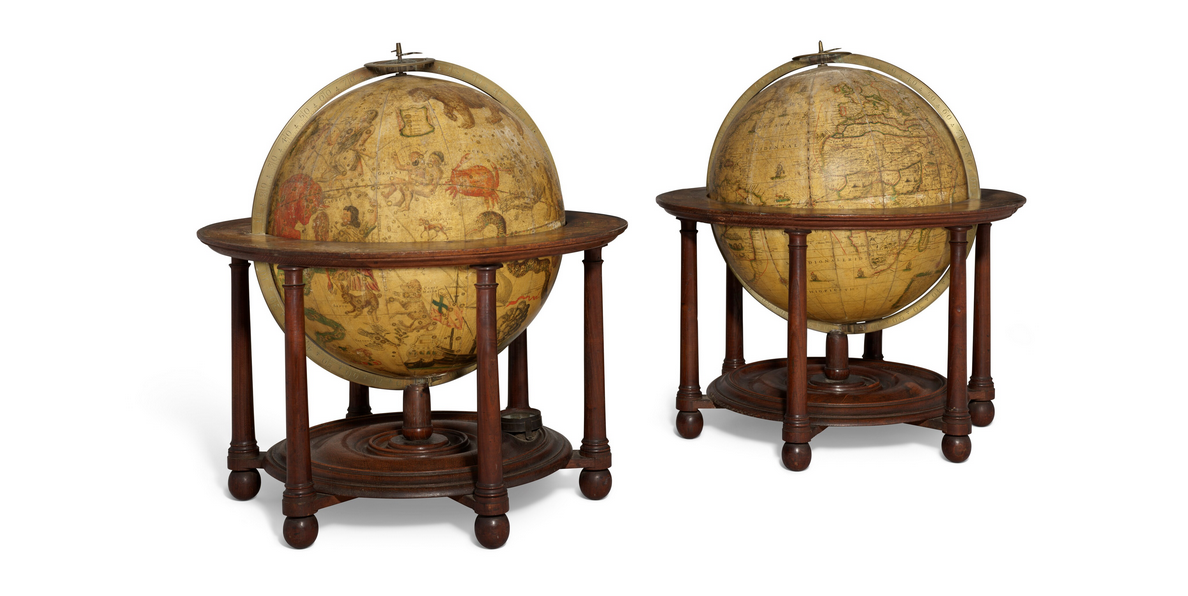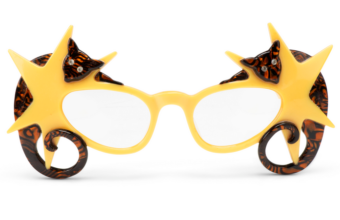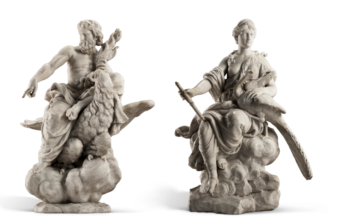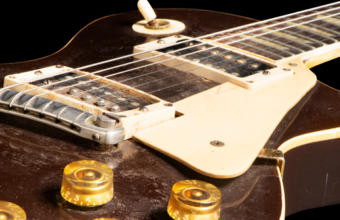A pair of globes, thought to be the earliest attainable English examples, have sold at auction for £201,600.
The globes, by Robert Morden, William Berry and Phillip Lea, were made around the turn of the 17th – 18th century in London.
They went into the sale at Christie’s in London this week with an estimate of £100,000 to £150,000.
The pieces were extremely fine examples of their type.
When they were made they would have been very expensive items for gentlemen. They were also considered cutting edge information technology.
They reflect a world that is incompletely described by modern standards. The terrestrial globe shows no Antarctic, Australia only partially mapped, Canada with no north or western coastal edges, and California as an island.
The terrestrial globe is matched with a celestial globe mapping the heavens. It shows 62 stars, and 48 Ptolemaic constellations.
The two globes can interact to map space and time across the globe.
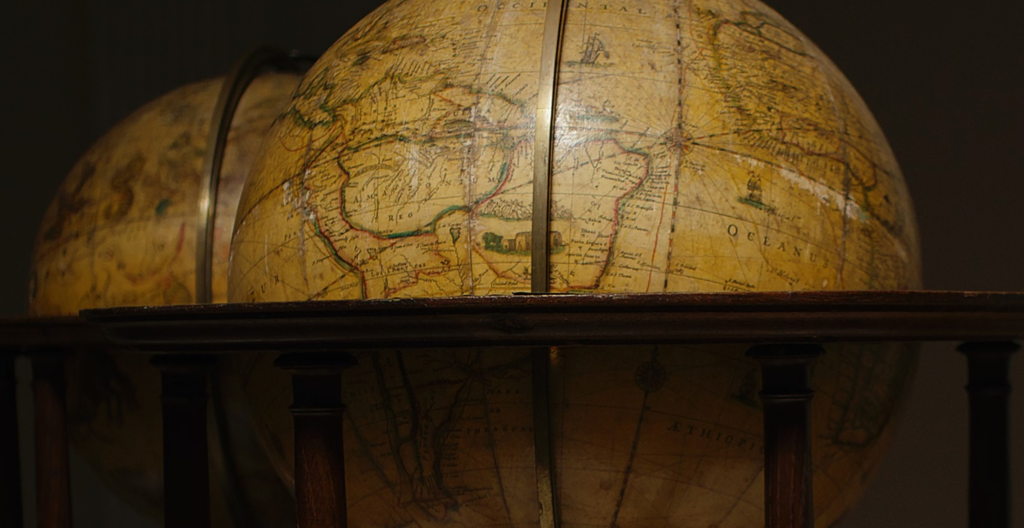
Details of the map show a world that is on the way to our understanding of the globe.
The crafting of both is exceptional and involves not just very fine mapping, but also the highly specialised skill of transferring 2-d maps onto a 3-d globe.
Christie’s sold the globes as the oldest English pair in private hands.
These globes were stored for many years in a Masonic Lodge in Bridport, Dorset, to which they were gifted.
In part that accounts for their survival and extremely good condition.
Other surviving examples by the same makers are in the Whipple Museum of the University of Cambridge and at the Royal Museums Greenwich. None are in such good condition.
At the time the globes were made the Dutch dominated the cartographic world, and a Dutch atlas was the most valuable geographic item in the auction that sold the globes. The Grooten Atlas by the Blaue brothers of Amsterdam exceeded its £250,000 top estimate to sell for £289,800.
The highest priced auction sale of any map was the 2010 sale of “A New and Correct Map of the United States of North America” by Abel Buell for $2.1 million.
The world’s most valuable map was sold by private sale for $10 million in 2001.
It was the “Universalis cosmographia secundum Ptholomaei traditionem et Americi Vespucii aliorumque lustrationes” (“The Universal Cosmography according to the Tradition of Ptolemy and the Discoveries of Amerigo Vespucci and others”) by Martin Waldseemüller.
It is the only known copy of the first map to use “America” to describe the current United States.







